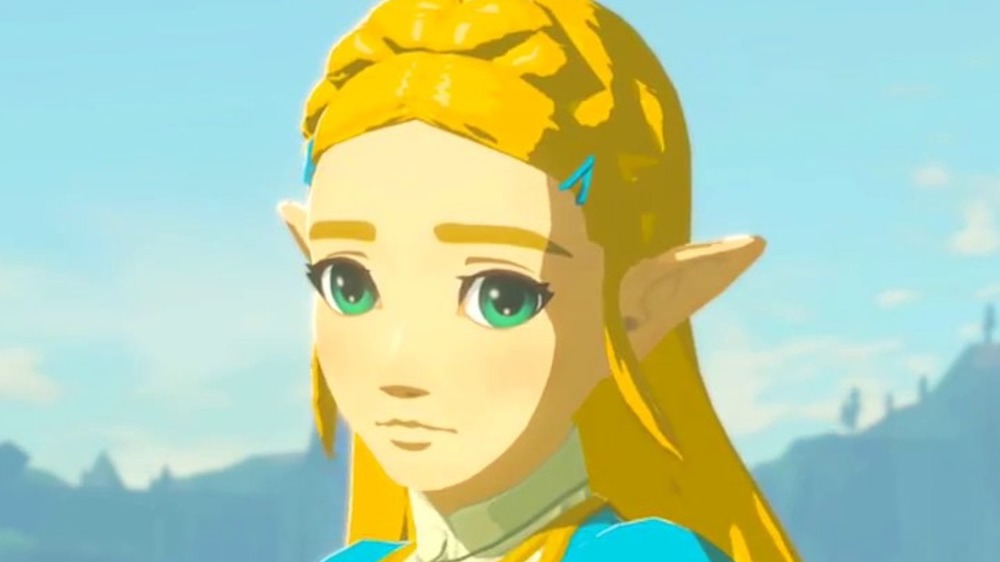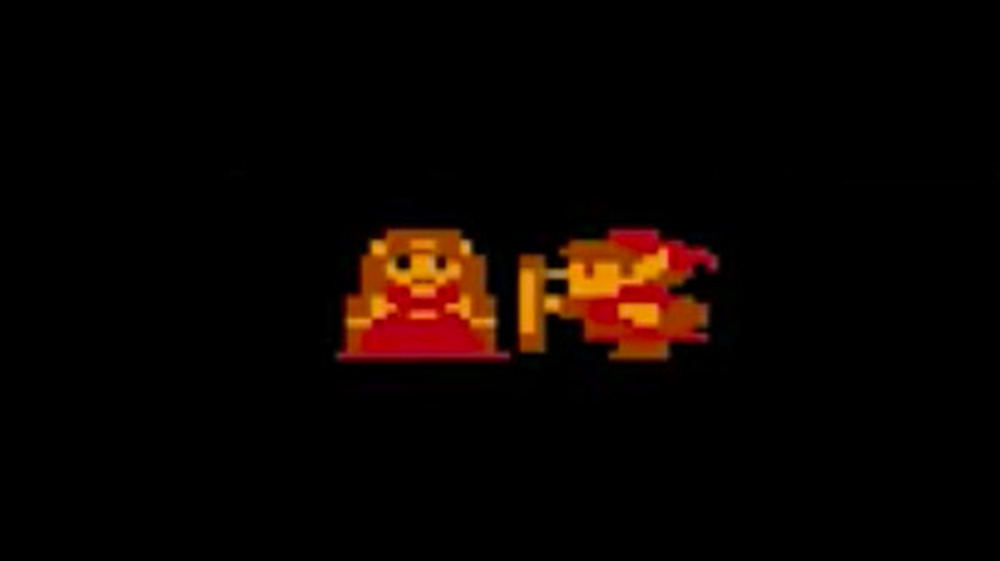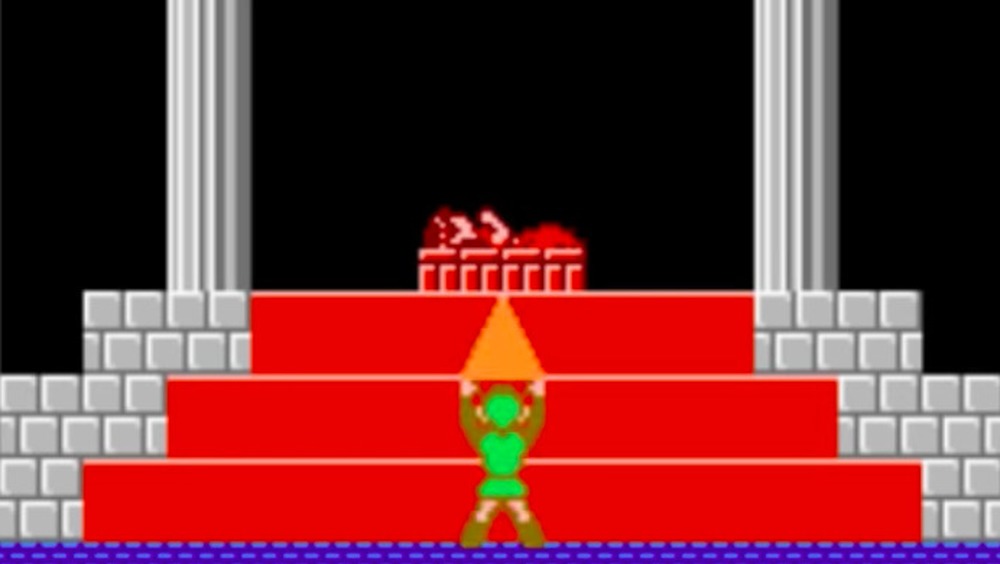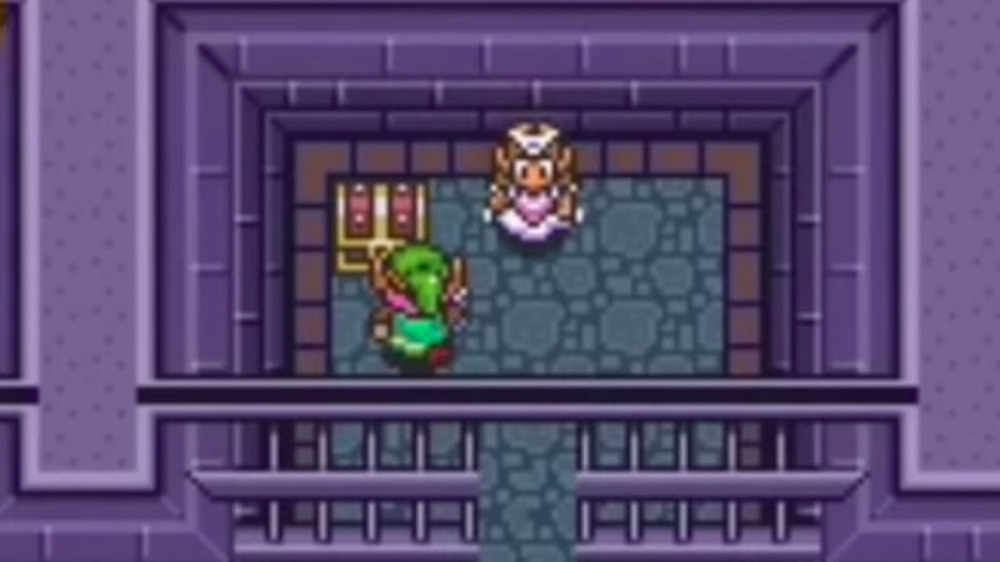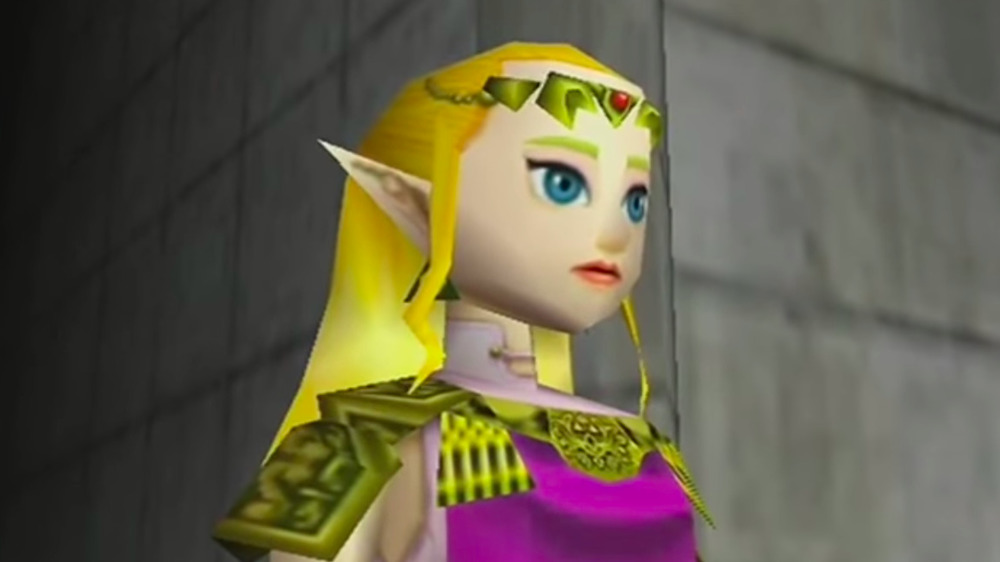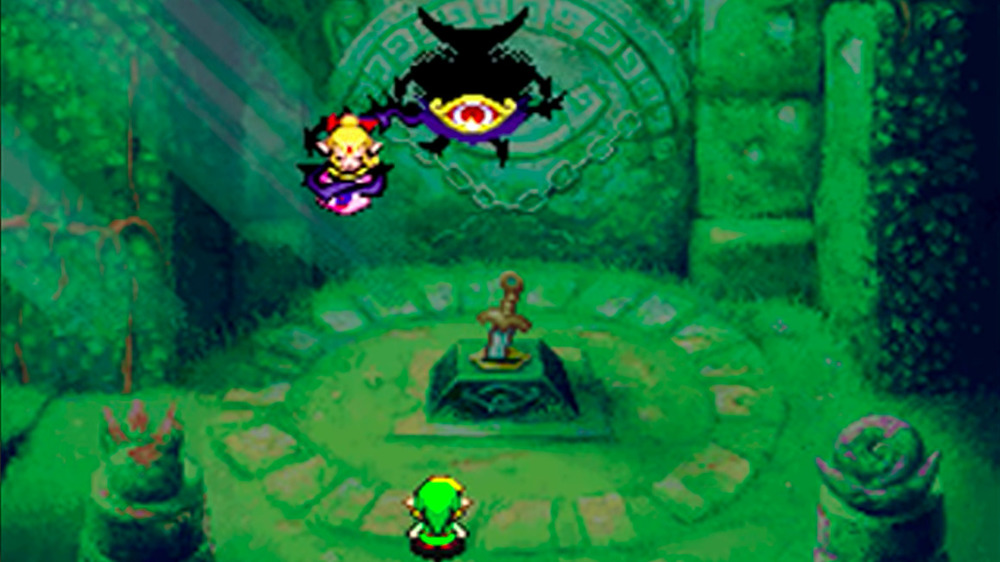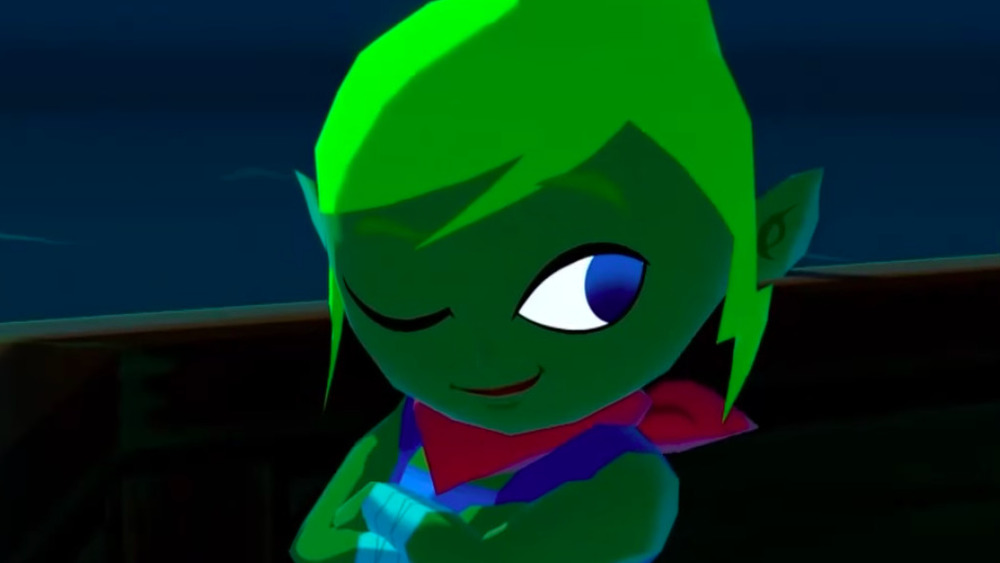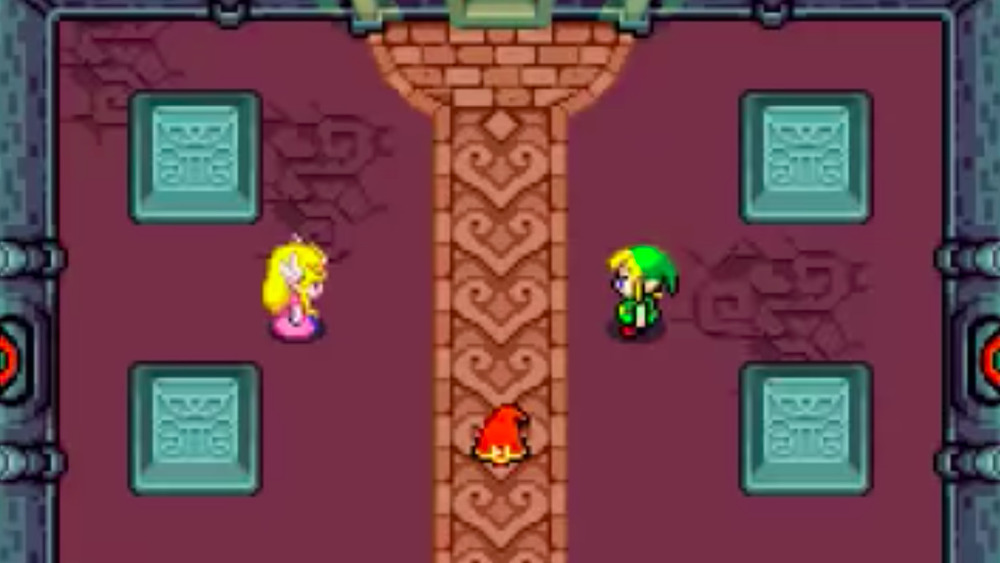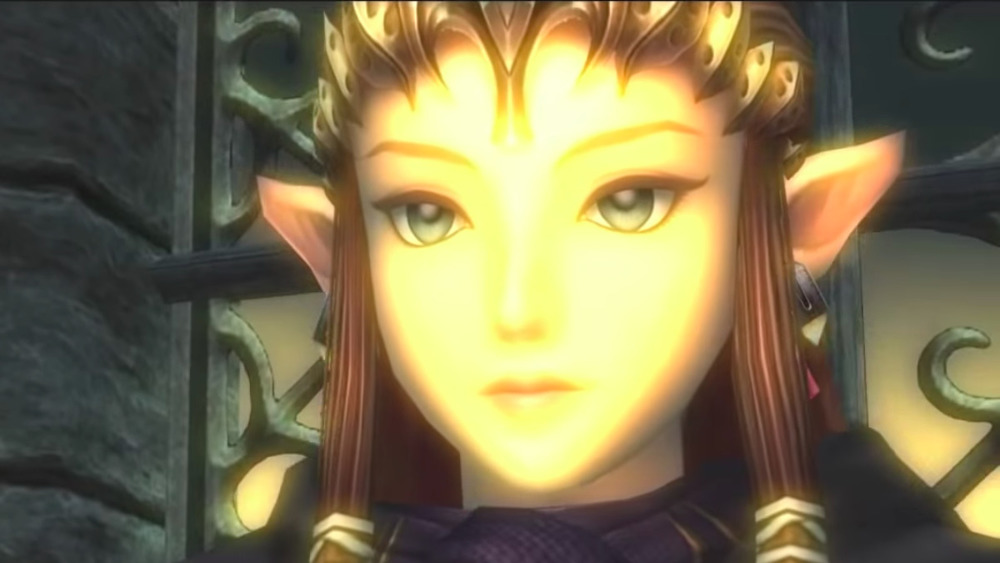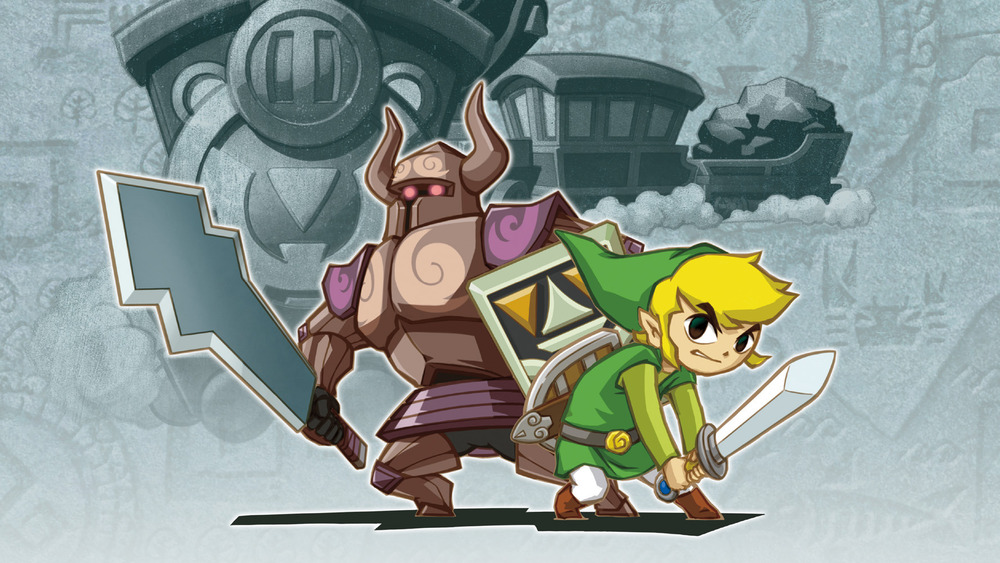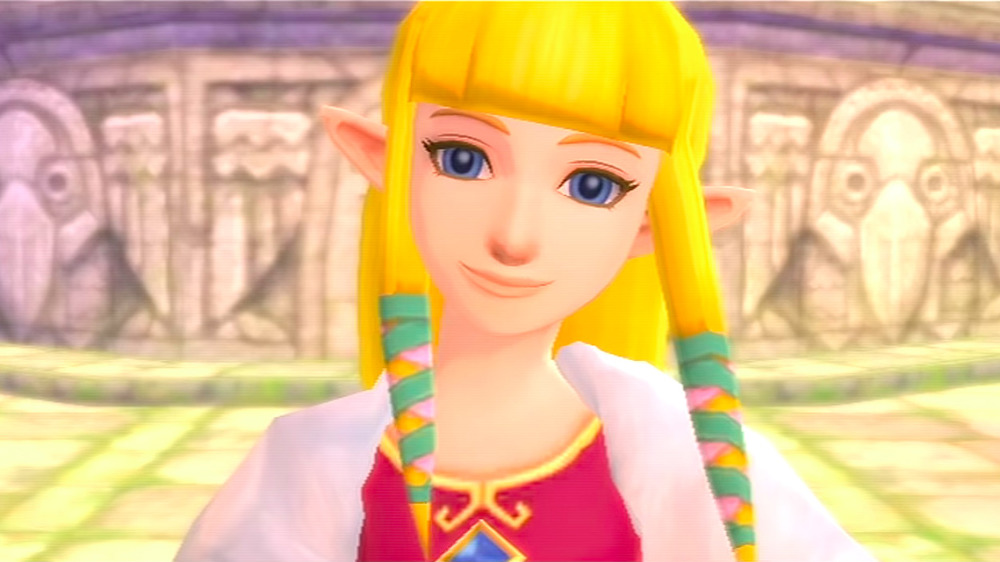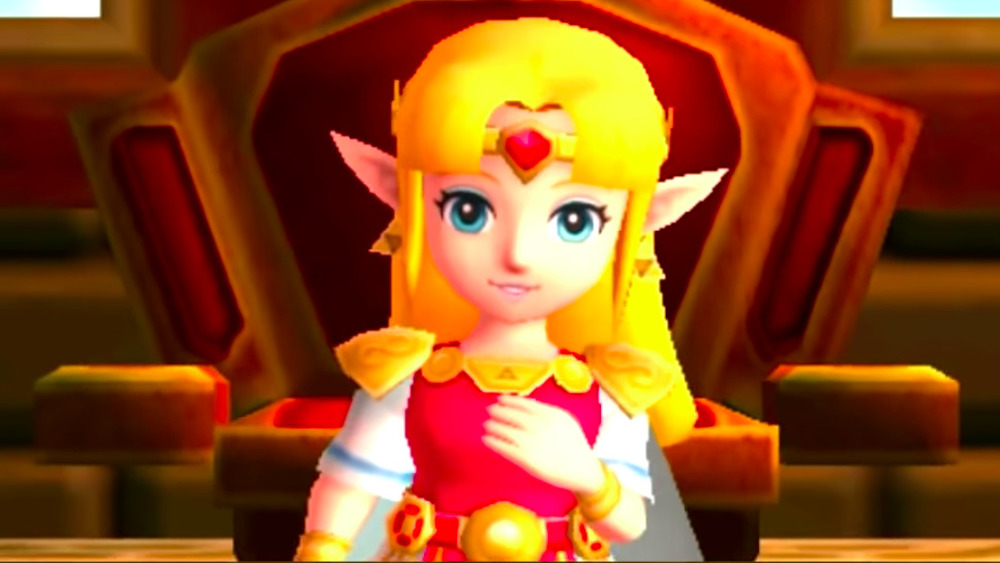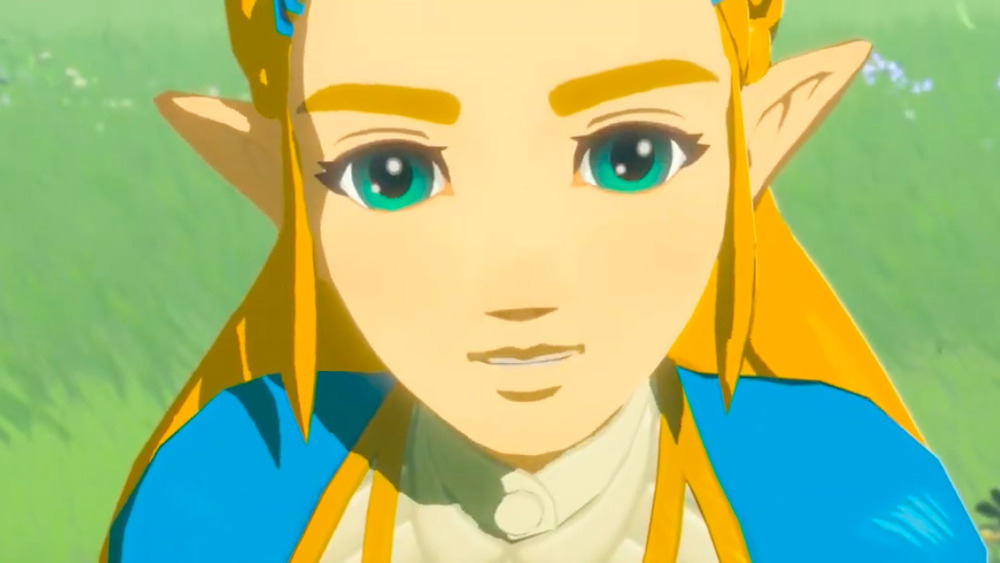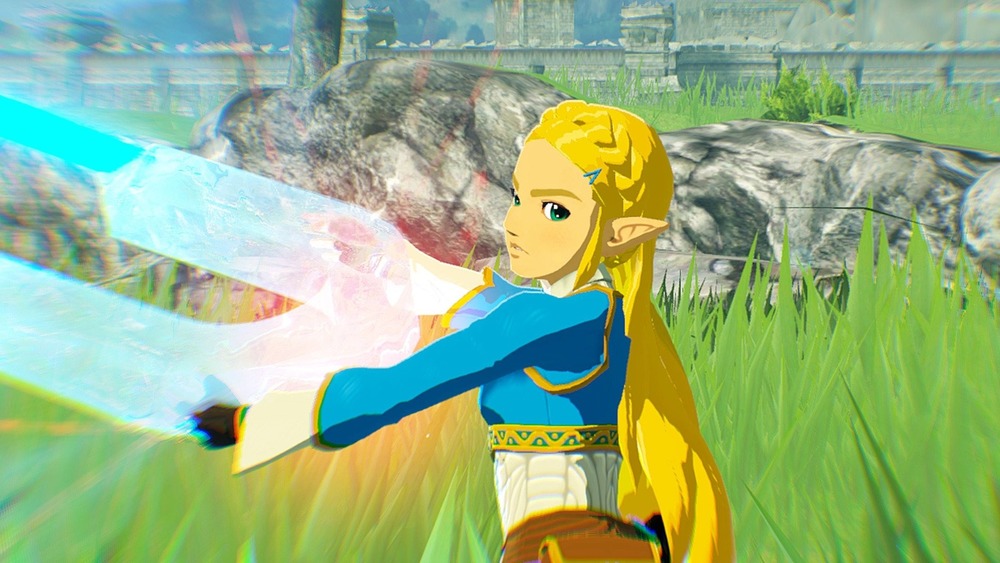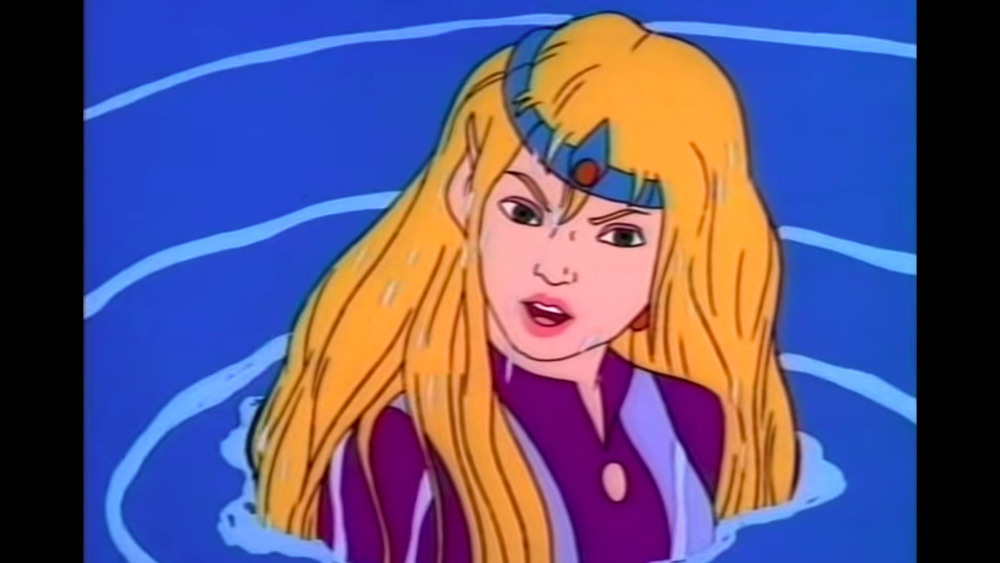The Stunning Transformation Of Princess Zelda
The Legend of Zelda has been one of Nintendo's most beloved franchises since its debut in 1986. Over the past decades, the Zelda franchise has experienced major changes to its gameplay, lore, and characters — especially the eponymous princess herself.
Zelda has played various roles throughout the series' lifetimes, and no two of her many incarnations are the same. She perpetually toes the line between being a damsel in distress and a hero in her own right, though recent titles have made her a far more active player in her kingdom's well being.
The evolution of Nintendo's iconic princess (at least, one of its iconic princesses) has been an incredible lesson in character design and development. With all of that in mind, it's time to take a look back at all of her various appearances and watch the stunning transformation of Princess Zelda.
Note: This article contains major spoilers for the entire Zelda series.
The titular princess debuted in The Legend of Zelda
The Legend of Zelda introduced Princess Zelda in 1986. When Ganon comes to Hyrule intent on stealing the Triforce and using its power to take over the kingdom, Zelda splits the Triforce of Wisdom into pieces and scatters them about the land, delaying his takeover until a courageous hero can rise up to stop him. She doesn't play a very active role beyond this point, as she's imprisoned by Ganon until Link eventually comes to her rescue. Still, her determination to protect her domain from evil establishes a legacy that endures in her future incarnations.
According to Hyrule Historia, Princess Zelda is named after American novelist Zelda Fitzgerald. Shigeru Miyamoto (co-creator of the Zelda franchise) wanted a princess with "timeless beauty and classic appeal," and Zelda seemed like a fitting name for the "eternal beauty" that would become Nintendo's now-famous princess. Zelda's classic appeal is evident in her early character design, which is very basic compared to her later iterations. Hyrule Historia shows her wearing a simple pink dress, and only a small tiara to set her apart as a princess.
Zelda did her best Sleeping Beauty impression in The Adventure of Link
Zelda 2: The Adventure of Link introduced Zelda I into the royal family lineage. Hyrule Historia revealed that the king of Hyrule secretly hid the Triforce of Courage and passed the Triforces of Wisdom and Power onto his daughter Zelda after deciding that she was more pure of heart than her brother. Jealous over the loss of his promised inheritance, the prince demanded that Zelda give up her knowledge of the missing power.
When the princess wouldn't divulge her secret, the prince's court wizard lost his temper and placed Zelda into a cursed slumber that lasted centuries. Horrified by his actions but too slow to reverse them, her brother decreed that the royal family would name all of their daughters "Zelda" to honor his sister's memory and attempted to rule his kingdom without the Triforce.
Because of her fate, Princess Zelda plays a pretty minor role in the game. Link is called to his heroic duties once again after learning the fate of the long-lost princess, seeking out the Triforce of Courage and using the power of the completed Triforce to restore Zelda I from her ages-long sleep.
Zelda's powers and role expanded in A Link to the Past
Following the success of the two previous Zelda games, Nintendo reportedly had access to a much larger budget for A Link to the Past, which was released four years later in 1991. Nintendo's increased time and resources resulted in a beautiful, expansive world for players to explore and a more immersive, story-based campaign to guide them through it.
A Link to the Past is the first game in the series to establish Princess Zelda's divine heritage, which gives her a more prominent role in the narrative. According to Hyrule Historia, Zelda's blood carries remnants of the goddess Hylia, giving her magical abilities that make her crucial in the fight against Ganon. She, along with the maidens descended from the seven sages who originally sealed Ganon in the Dark World, bear the power that maintains the seal. She also has telepathic powers, which allow her to contact Link when the dark priest Agahnim captures her in the hopes of breaking the seal and releasing Ganon.
This version of Princess Zelda is the same one that features in Oracle of Seasons and Oracle of Ages, though her role is relatively minor in both games.
Ocarina of Time presented Zelda as a much more three-dimensional character
Princess Zelda's appearance in Ocarina of Time came with her greatest transformation yet — in more ways than one. With the improved graphical capabilities of the Nintendo 64, Zelda's 1998 iteration received a 3D character model and a brand new take on her relationship with destiny, her kingdom, and the Hero of Time.
Princess Zelda shares her concerns about Ganondorf when she meets Link in Ocarina of Time, revealing a prophetic dream in which Ganondorf brings ruin to Hyrule. She enlists Link's help in obtaining the Spiritual Stones that open the Sacred Realm, hoping to claim the Triforce before Ganondorf can take it for his own. Their plan fails, and Zelda is forced to flee when Ganondorf launches an attack on Hyrule Castle.
Determined to help her kingdom despite the odds, Zelda disguises herself as an individual named Sheik. Seven years after Ganondorf's siege, Sheik assists Link on his quest to awaken the six Sages that bear the power to seal Ganondorf away. When the time is right, Zelda reveals herself to be the princess and the seventh sage and they confront Ganondorf. The result of Zelda's actions in this final battle marks the point where the official Zelda timeline splits into three distinct paths.
Zelda upheld a new legacy in the Four Swords games
Though canonically separated by centuries, the two versions of Princess Zelda that appear in Four Swords and Four Swords Adventures have a lot in common. Since the games were released in close succession to one another and follow a similar plot, both princesses use the same in-game sprite and official art, and bear the power to seal away evil magic.
Released in 2002 alongside the Game Boy Advance port of Link to the Past, Four Swords introduced a new Princess Zelda: the latest in a long line of descendants who maintain the seal on the Four Sword. The Wind Sorcerer Vaati eventually breaks the seal and kidnaps Zelda to make her his bride. Link uses the Four Sword's power to split his body and rescue the princess. Together, they seal Vaati away, and the sword lies dormant once again.
Many years later, another Princess Zelda gathers the six maidens who preserve the sword's seal after dark clouds begin gathering over Hyrule. Unbeknownst to them, the darkness is actually the result of Ganondorf's rise to power — when they attempt to check the seal, they're whisked away by the shadows. Link draws the sword to save them, releasing Vaati and setting into motion the events of 2004's Four Swords Adventures.
The Wind Waker's Zelda was more pirate than princess
The Legend of Zelda: The Wind Waker may have had a controversial release in 2003, but its interpretation of the Zelda mythology and the princess herself retroactively earned the game a glowing reputation as one of the best titles in the series.
Wind Waker offers a new take on Zelda as a cel-shaded, spunky pirate captain named Tetra who doesn't know about her royal lineage. Her timely arrival on Outset Island (if you can really call being dropped from the air by a giant bird an "arrival") sets the story into motion, as the bird mistakes Link's young sister for Tetra and captures her in the pirate's place. Guilty over her part in the kidnapping, Tetra begrudgingly agrees to take Link aboard her ship to rescue his sister.
Tetra helps Link on the sly throughout the game until it's revealed that she's actually the princess of the long-lost kingdom of Hyrule. Repairing the Triforce of Wisdom transforms her into Zelda, and she remains in the ruined kingdom until Link obtains the Triforce of Courage. Refusing to be a damsel in distress, she helps Link in his final battle against Ganondorf by firing light arrows at their shared foe.
Even after learning of her destiny, Tetra chooses to spend her life on the high seas and takes Link with her in search of a new continent in Phantom Hourglass.
The Minish Cap turned Zelda into a statue
Princess Zelda doesn't play much of a role in The Minish Cap, as she spends the majority of the game as a statue. The evil sorcerer Vaati sensed that Zelda would ruin his plans to obtain the Light Force, and turns her to stone to keep her out of his way. She's saved when Link uses the Picori Blade (known as the Four Sword when infused with the power of the four elements) to defeat Vaati and break his curse.
Despite coming out in the same year as Four Swords Adventures, Minish Cap serves as a prequel to both of the Four Swords titles. Zelda's design and abilities differ slightly from those of her descendants, however. Her official art (shown in Hyrule Historia) more resembles that of her cel-shaded counterparts in Wind Waker and Phantom Hourglass, and she doesn't have the power to seal Vaati away. Rather, she receives her power from a mystical source known as the Light Force, which she uses along with the Mage's Cap to restore Hyrule once Vaati is defeated.
Twilight Princess unveiled Zelda's darkest iteration
The Zelda franchise took a somber turn in 2006 with Twilight Princess, which cast the series in a much more serious light. Princess Zelda herself became a darker character as a result. Without making her too dour, developers endeavored to give her facial expressions conveying the "hopelessness and anxiousness" that highlighted her new maturity. The sacrifices she makes for her people must be believable, and the concept art shown in Hyrule Historia illustrated this in every one of Zelda's potential character designs.
Twilight Princess's incarnation of Zelda faces an in-game transformation of her own. After giving up her spirit to keep Midna alive, Zelda is left weakened and susceptible to attack. Ganondorf, who has slowly been regaining power in the Twilight Realm, possesses Zelda and turns her into his grotesque puppet. He forces her to fight Link as he transforms into Beast Ganon. After regaining her spirit, Zelda is able to fight alongside Link to drive Ganondorf out of her kingdom once and for all.
Spirit Tracks explored new ways for Zelda to help Link in his quest
Daiki Iwamoto, the director of Spirit Tracks, wanted to give Zelda a more integral role in the game. When the results of a Nintendo poll showed that Western audiences preferred strong female characters with greater agency, developers set out to create a princess that actively participated in Link's 2009 adventure. The result of their efforts is a Zelda that works as a sort of sidekick, offering advice, commentary, and even assistance with puzzles and combat.
After being separated from her body by the evil Chancellor Cole, Zelda's spirit accompanies Link on his quest to rescue her. Throughout the game, Zelda can possess sentient suits of armor called Phantoms, which give her a physical body that she can use to interact with other parts of the dungeon. Princess Zelda's brief stint as a Phantom is referenced in her Super Smash Bros. 4 and Ultimate appearances, as her Down+B move creates a Phantom that can be charged and launched at opponents.
Skyward Sword ditched the royal trappings to focus more on Link and Zelda's relationship
Skyward Sword gives players a version of Zelda that isn't your typical princess, mostly because she isn't a princess. Rather, she's the charming daughter of Skyloft's mayor and the unhappy recipient of destiny's heavy burden.
Developers found that making Link and Zelda strangers at the beginning of the game doesn't create sufficient emotional stakes. Director Hidemaro Fujibayashi explained to 1Up that it felt "contrived" to force players to rescue Zelda simply because she was a princess, and so the team wanted to give them a reason to want to save her. Enter Zelda's 2011 counterpart, an enthusiastic devotee of the Goddess Hylia and Link's closest friend since childhood.
The game's earliest moments offer players plenty of opportunities to love Zelda. The time spent building up their mutually-cherished friendship can make her ultimate disappearance feel just as devastating for players as it is for Link. Even with the eventual reveal that she's the goddess reborn, Zelda retains her girl-next-door appearance. Hyrule Historia, which was published with plenty of bonus art and behind-the-scenes discussions for Skyward Sword, detailed this iteration's concept designs with the single instruction that Goddess Zelda be dressed "simply, and in white."
A Link Between Worlds continued the trend of turning Zelda into an object
Talk about a stunning transformation — in A Link Between Worlds, Zelda is turned into a painting by the evil sorcerer Yuga. In this adventure, Link occasionally meets up with Princess Hilda, Zelda's Lorule counterpart.
A Link Between Worlds was released in 2013 as an indirect follow-up to A Link to the Past, and Zelda's design remains relatively similar to her older appearance. She's still a new incarnation, however, so a few minor changes appear — namely, a slight tweak to her color palette and simpler accessories that look a bit cleaner in 3D animation. Princess Hilda looks similar, though her color palette is swapped to reflect Lorule's darker nature.
Princess Zelda's design in Super Smash Bros. Ultimate is based on her A Link Between Worlds appearance, as developers felt that her Breath of the Wild personality would be incongruous with a fighting game.
Breath of the Wild highlighted Zelda's intellect and internal struggles
The version of Princess Zelda players meet in Breath of the Wild wouldn't be out of place in a science lecture. The memories you collect throughout the formula-defying 2017 title suggest that, despite her magical bloodline, Zelda struggles to unlock the spiritual power her ancestresses held. Instead, she's much more scientifically inclined. To escape the weighty expectations of her lineage (and to better serve her kingdom, of course), Zelda gleefully studies the diverse nature of Hyrule and the mysterious technology left behind by the Sheikah of old.
Zelda features prominently throughout Breath of the Wild's story. Link's recovered memories illustrate an intelligent, passionate young woman that's earnestly devoted to her kingdom. Her burgeoning friendship with Link shows a vulnerability that fans don't often see in a line of level-headed princesses. Instead, this Zelda struggles to fulfill her destiny and worries that her failure will mean destruction for the people she cherishes. Fully-voiced cutscenes also bring her character to life in a more relatable and human way than ever before.
Zelda uncovered new methods to fight for her kingdom in Hyrule Warriors: Age of Calamity
Players get to see a bit of Breath of the Wild's Zelda in action in Hyrule Warriors: Age of Calamity. The game is set during the war with Calamity Ganon and his corrupted Guardians. The story follows a time-travel plot in which Zelda and her companions are warned in advance of the upcoming Calamity, giving them a little extra time to prepare for battle.
Though Zelda doesn't yet have her full powers at her disposal, she's still able to use technology to fight alongside Link and the other Champions (as well as the game's many other playable characters) to fight off the evil plaguing their land. Zelda is also a playable protagonist in the original Hyrule Warriors spin-off, but the game's events are considered non-canon to the official timeline.
Zelda in spin-offs and other media
Princess Zelda has appeared in a lot of other media, and her interpretation in each of them is slightly different. Though she retains the core elements of what make her Zelda — her royal title, her fighting spirit, and her magical abilities — she always seems to go in interesting new creative directions.
The Super Mario Bros. Super Show! featured a Zelda miniseries based on the first two games. In this series, Zelda is a warrior princess who travels about Hyrule helping her people and fighting the monsters that Ganon continues to send to her kingdom. She has a far more romantic relationship with Link in the show, as he constantly asks for kisses as a reward for his good deeds. Her chastisements often lead to Link's infamous "Well, ex-cuuuuuse me, Princess!" line.
Zelda also appears as a playable protagonist in the embarrassing Phillips CD-i games The Wand of Gamelon and Zelda's Adventure, as well as the much better rated Cadence of Hyrule rhythm game spin-off. Lastly, she makes appearances in the Super Smash Bros. fighting game series as both herself and Sheik.

